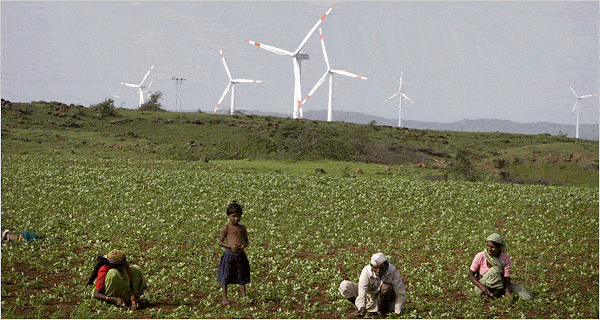The third largest emitter of carbon emissions, India, pledged it would reduce its emissions relative to its GDP between 33 and 35% by 2030 relative to 2005. India, a rapidly developing country, will continue its industrial expansion which includes, of course, building more coal plants and releasing more carbon emissions than it does today, however what the government, in fact, pledges is decoupling emissions from economic growth. It’s a sound victory for the planet, but to achieve its goals India will require help from developed nations. Hopefully, this might be possible under a common climate-protection framework on a global level which will be discussed in Paris during the UN talks scheduled in November.
The announcement was made following India’s submission of its 38-page climate action plan to the U.N. climate secretariat, as almost other U.N. member states have before it. Environment Minister Prakash Javadekar said “every action will be cleaner than what it was earlier”, and that Indian traditions and culture are already “at one with nature.”
Ethically speaking, India may be entitled to burn as much fossil fuel it needs to catch up with the of the Western world. Just look at the US, the second largest emitter in absolute numbers behind China. Historically, the US has polluted the most. Since the mid-1800s, the US has spewed 29% of all man-made CO2 into the atmosphere. India is the third highest country (fourth if you count the combined emissions of the EU) in terms of absolute emissions, but only 127th in terms of per capita output with 1.7 metric tonnes per capita. That’s because India, a huge country with a population numbering almost 1.3 billion, is also one of the poorest, on a per capita basis. Some 300 million Indians don’t have access to electricity (!), and more than half don’t use a flushing toilet. As such, expect India to still pump out a lot of emissions in the coming years. What’s admirable is that this whole process will take place a lot more responsibly, if we take the government’s word for it.
source: tradingeconomics.com
India’s fossil fuel use (% of total)
Developing countries like India have an obligation to bring their people out of poverty and reduce the nation’s income gap by providing its people with basic services like electricity and running water. This comes at a price though. More than 60% of India’s energy comes from coal, and a report by Enerdata states that electricity consumption in India would have to increase threefold by 2030 to bring 300 million people out of poverty. This would mean a lot of new coal plants being opened, but at the same time India promises to install a considerable amount of non-fossil fuel power generators. In the pledge, the government says 40% of the country’s electricity would come from non-fossil fuel-based sources, such as wind and solar power, by 2030. So far, this stands at only 11%. Clearly, nuclear power will be included in the mix, but solar and wind could be extremely lucrative as well. India has an immediate renewable energy potential of approximately 166 gigawatts (GW) — 102 GW from wind power, 19.7 GW from hydroelectric power, 22.5 GW from biopower and 22 GW from solar energy. In the next five years, renewable energy generation in India will increase fivefold. In fact, India will soon open the biggest solar farm in the world in Madhya Pradesh which should generate a stunning 750 mega-watt (MW) of solar power. To get an idea, the current world’s largest solar plant housed in California generates only 391 mega-watt (MW).
We’re very happy about India’s pledge submitted to the COP21, where 190 other nations are expected to reach an international agreement meant to reduce the carbon stress on the planet’s climate. Now, it’s time for the developed and wealthy countries to show even more radical action. “The developed world has polluted the world, but we will help even though we are suffering,” Javadekar said.










